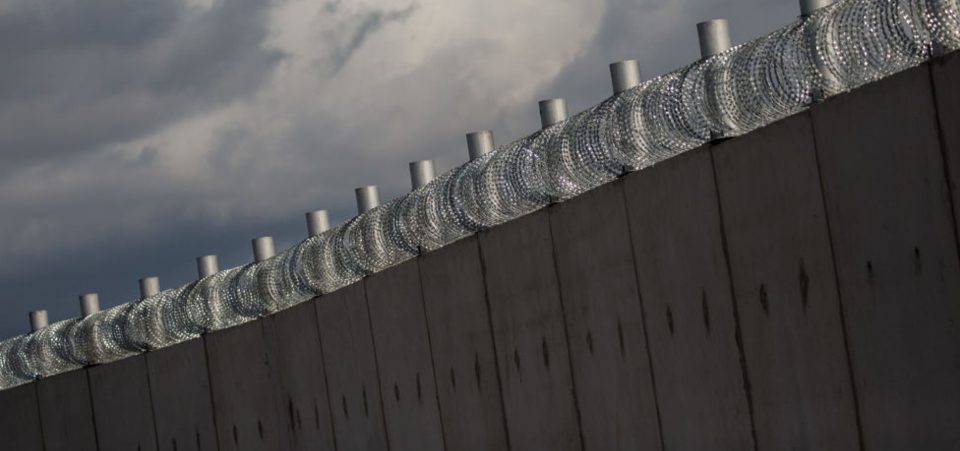Trump Border Wall Could Cost Much More Than Initial Estimates
Could President Donald Trump’s border wall cost more than the initial estimates? The goalposts keep moving on this issue. Let’s take an in-depth look at what the cost structure might look like, given what we know. One thing is certain: the Mexico wall could be much more expensive than originally thought.
Here’s the general timeline on how the estimated cost of the wall has changed through Trump’s presidential campaign to just after he was sworn-in on 1600 Pennsylvania Avenue (in Trump’s own words):
September 2015: $4.0 billion
“Let’s say the wall cost $4 billion… if you know what you’re doing and the $4 billion will be much bigger, much better, much stronger than the $10 billion.”
November 2015: $6.0 billion to $7.0 billion
“The wall is going to cost $6 billion or $7 billion if I build it. If somebody else builds it, it’s going to cost $20 billion.”
February 2016: $8.0 billion
“The wall is probably $8 billion, which is a tiny fraction of the money that we lose with Mexico.”
Two weeks later: $10.0 billion to $12.0 billion
“Now, the wall is $10 billion to $12 billion, if I do it. If these guys do it, it’ll end up costing $200 billion.”
By the time Trump sealed his electoral victory, other members of the GOP weighed in. The added realism only made the potential cost of the wall rise even faster. Paul Ryan and Mitch McConnell are on record stating they expected the wall to cost $12.0-$15.0 billion in January 2017. The estimate lurched ever higher when an internal Homeland Security document pegged the final cost $21.6 billion. (Source: “(The cost of) Trump’s wall keeps getting higher and higher,” Axios, January 26, 2017.)
The goalposts were effectively moved yet again in April 2017. The initial estimated cost of the Mexico wall moved from $21.6 billion in February to a whopping $70.0 billion by April, after a new feasibility report was released. This provided new fodder for Senate Democrats to hammer away at the Republican administration, questioning both the Trump wall cost and the effectiveness of such a structure. (Source: “Border Wall Could Cost 3 Times Estimates, Senate Democrats’ Report Says,” The New York Times, April 18, 2017.)
Now that wall prototypes are being built, we can look forward to learning how much money taxpayers should expect to pay (assuming that we even see a border wall budget approved).
Here’s what we know.
Trump wants a more high-tech iteration of the Mexican border wall. Instead of a ragtag grouping of mixed-material walls as is currently deployed, the newer wall sections will be much more sturdy. This will require more complex materials and a greater volume of materials. As such, I think the higher-end cost estimates are more realistic, and I believe that cost overruns are possible.
Also Read: Trump Predictions: 7 Ways Donald Trump Will Transform America
The new border wall will probably extend several feet below ground throughout the entire structure, to prevent tunneling. This might involve reinforced concrete or steel rebar-type materials. This enhancement is sure to add several billions of dollars to the final tally.
Next, the security wall is likely to be outfitted with the latest in high-tech sensory and imaging devices. The cost of such technology has decreased over time, but it will still add up, considering the wall’s great length.
How long is the border between Mexico and the U.S. anyway? About 1,954 miles, but the Trump border wall won’t be that long. With 654 miles of border already fortified, an additional 600 miles is projected to be covered in three separate construction phases. There will be some significant gaps in places where natural barriers make crossing difficult. Therefore, the wall pricing estimates do not extend to the entirety of the U.S.-Mexico border.
How long will it take to build Trump’s wall? Initial estimates pegged it at about three-and-a-half years. It’s hard to envision that happening though, considering the enormity of the project. Builders are also likely to encounter significant pushback from open-borders advocates, and possibly from Mexican drug cartels. This could serve to significantly elongate construction timelines, adversely affecting the cost.
Although Trump has a reputation of completing building projects on time and on a budget, he’ll be hard-pressed to deliver this time. Government contractors are a different animal than private sector non-unionized employees, and significant subversion from opponents of the wall is probable. There’s also the extravagance of the wall, which will be built more robustly than any comparable border wall.
Unless some new-age mechanical device is used to build around the clock and reduce labor costs, I suspect the final bill will stretch into the 12-digits ($100.0 billion-plus) and take north of four years to complete. More will be known once the final prototype is selected.






